Learning Connection
Page Navigation
Blended learning in Blue Valley creates more personalized instruction for students
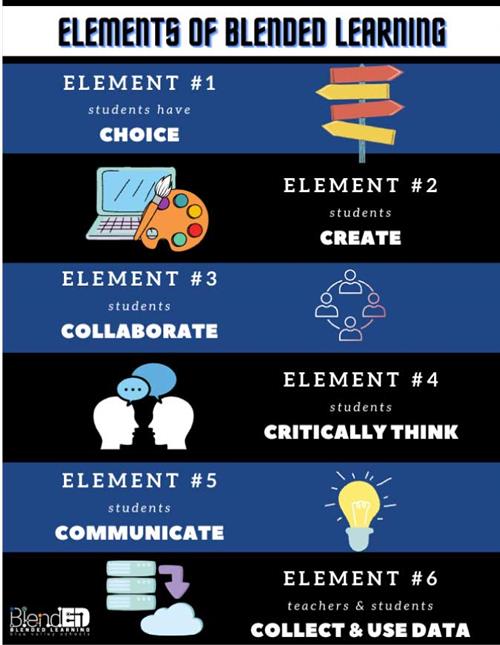
Aubry Bend Middle School science teacher Melissa Molde starts off her class by telling her students about the day’s lesson, but instead of standing in front of the classroom and going through a lecture, she allows the students to work with each other.
She explains to them they will be working to understand the anatomy of lilies and will rotate through five workstations during the class period.
As she works with one group of students as they learn about plant reproduction, the other groups at each station are tasked with completing a different activity, all tied to the overall lesson and content standard. After an allotted time, the groups rotate through the stations until they have finished each activity.
Station rotation is an integral piece of blended learning in Blue Valley. The opportunity to rotate through different activities allows students to choose what they work on at each station leading to personalization that fits each student’s needs.
What is blended learning?
Blended learning, the combination of online tools with in-person learning, elevates learning by leveraging digital tools to enhance traditional instruction. Students are given the tools that empower them to create, collaborate and learn.
“In simplicity, blended learning is teaching with technology, but the focus is still on the learning and not the technology,” said Brad Moser, Blue Valley’s blended learning director. “Today it’s hard to do anything without having some form of technology that impacts our lives and the things that we do. Using technology effectively and efficiently is a crucial skill to prepare students for their future in the workforce or in college.”
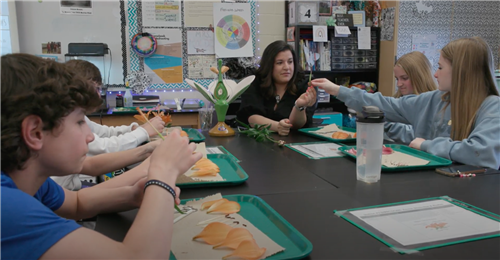
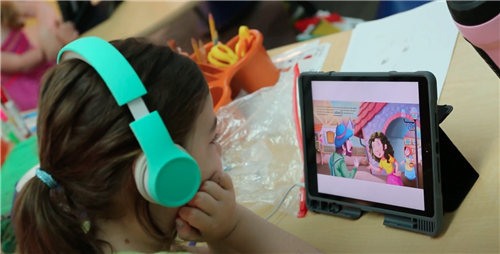
Teachers plan lessons and activities powered by Blue Valley’s technology and web tools — Canvas, Nearpod, WeVideo, Canva, Google, Adobe — that allow students to learn, create, research, watch and consume learning. Blended learning utilizes those tools and implements them when and where they are appropriate.
One goal of blended learning is to prepare students for the future and ensure they have the skills needed after high school.
“It’s really focusing on those skills so when students leave us after 12th grade they are employable or they can go to college,” said Jeramie Davis, district coordinator of blended learning (secondary). “They know how to talk to each other face-to-face, they can also collaborate through email and really have those six skills. It’s about well-rounded students becoming more effective and an integral part of society.”
Blended learning allows students to work outside the classroom while still within the school building.
“The technology tools allow them to get more in-depth but also communicate and collaborate with people outside of our bubble,” said Lindsey Hallett, district coordinator of blended learning (elementary). “I think that’s one of the biggest impacts of blended learning.”
The 6C’s of blended learning and how they are incorporated
Blue Valley’s blended learning strategy focuses on six areas: choice, collaboration, creativity, communication, critical thinking and collecting data.
Incorporating the 6C’s offers many avenues for teachers to differentiate teaching and learning in the classroom, ensuring more personalized instruction.
As Molde’s class gets to work, each workstation is experiencing a different element of blended learning. One station is working on collaboration and brainstorming. A small group working with Molde is completing the task of flower dissection.
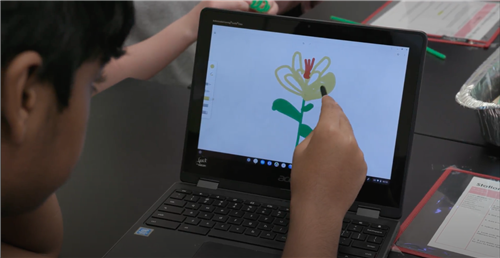
While some students work independently or with a partner on a presentation, two more groups work through digital content.
“I have five different stations in my classroom, and a lot of times, one to two of them will be focused on the Chromebook and using technology while the others are a little more hands-on or small group,” Molde said. “I just try and give a lot of variety and find something that’s meaningful for the kids so that the technology incorporation is relevant.”
The use of technology gives students more variety and choice.
“I might have two different link options, two different online activities, two different topics they can research,” Molde said. “I think they like having some things that are hands-on, sometimes they like working with me and hearing some direct instruction.”
Blended learning provides students the opportunity to explore what they find interesting while using multiple outlets to learn the same curriculum. The combination of technology and traditional instruction also keeps lessons relevant, rigorous and engaging for different learners.
Prairie Star Elementary kindergarten teacher Sue Rassette can see how blended learning has transformed her instruction and her students’ learning.
Station rotations are an important part of Rassette’s class as students rotate through activities and small group work.
“Each rotation is focused on a particular task or skill we want them to do,” Rassette said. “One is read-to-self, so they are practicing their independent reading, another one is working on writing where they can practice writing whatever they are doing in writer’s workshop.”
Some students practice their high-frequency words or letter-sound association, while another group practices reading their consonant-vowel-consonant words.
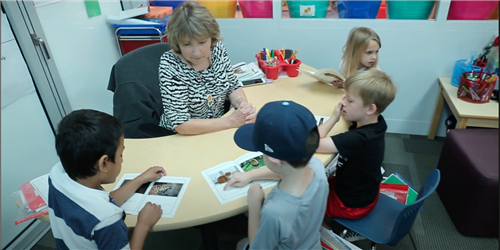
“Station rotation also has enabled me to be in more than one place at a time,” Rassette said. “I used to be tied to that small group table. Now with Canvas and the blended learning model, I’m able to actually record videos of myself giving instructions. It’s also, I think, made them a lot more independent.”
At the high school level, blended learning prepares students for life outside of high school.
“At the high school, I feel like a lot of the research is done online,” Moser said. “It’s a little more college-esque. The kids have a little more freedom, but we do promote the use of station rotation as a way for teachers to effectively use technology but also use some of those great traditional instructional practices.”
Heidi Gipple, social studies and psychology teacher at Blue Valley Northwest, said blended learning in her classroom is more about differentiation and choice than technology-focused.
“I think it’s about personalizing their education,” Gipple said. “It’s about tailoring it to their individual needs. I think it’s a lot about choice, giving students the choice to be able to learn at their own pace and be able to explore maybe some things that are deeper into a content area.”
Gipple said she wants her students to have a voice in what and how they learn. Blended learning allows for those choices to be made.
Students who have grown up in a technology-driven world are comfortable using computers, but Gipple also sometimes sees the refreshed look on her students' faces when she suggests they instead have a class discussion or collaborate with a partner using a pen and paper.
“Blended learning doesn’t have to look technology-driven,” Gipple said. “If we are using technology just to use it, it will become mundane and we will get stuck. Some people like to take notes on the computer, some like paper. If they feel like technology really enhances their learning, then they have every opportunity to use it. They are still able to get the same learning and same goals out of it.”
Kari Hillen, Blue Valley Northwest’s technology integration specialist, said she sees more teachers being more purposeful about when they use computers versus face-to-face or paper and pencil learning.
“Almost all departments at BVNW have used blended learning to support a type of station rotation, to give students choice when creating products, and to connect with others both collaboratively with peers and in some cases, with experts in a field,” Hillen said.
Those who walk into Blue Valley classrooms may see students working on various tasks, some that require computers and some that don’t.
“I would want people to see students collaborating together and to have the opportunity to create and not just consume,” Hallett said. “Hopefully, they would see station rotation, small groups working on different tasks and extending their learning beyond that whole group, traditional type lesson.”
Blended learning truly makes education personalized.
“I think sometimes there’s a misconception that blended learning is just being on technology all the time, but really it’s how can we infuse it into a lesson and make it something that’s enriching and beneficial to our kids,” Molde said.

